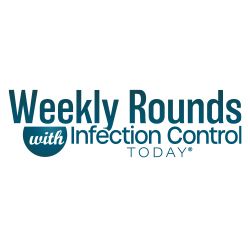Weekly Rounds: Rare Diseases, VR Training, Antivaccine Influencers, and More
Take 5 minutes to catch up on Infection Control Today®’s highlights for the week ending February 17, 2024.

Here are 5 highlights from Infection Control Today®'s (ICT®’s) wide-ranging coverage of the infection prevention and control world. Everything from interviews with known opinion leaders to the news that infection preventionists and other health care professionals can use on their jobs.
Alaskapox Virus: First Fatal Case Sparks Statewide Concerns and Expanded Surveillance Efforts
The first death from Alaskapox virus (AKPV) raises alarm in Alaska, prompting expanded surveillance efforts statewide to understand and prevent potential infections.
Saskia v. Popescu, PhD, Discusses How to Prepare for Rare Infectious Diseases
Health care workers must stay vigilant against rare pathogens. Saskia v. Popescu, PhD, MPH, MA, FAPIC, an expert in infection prevention, emphasizes the importance of robust measures and preparedness.
Comparing Effectiveness of VR, Face-to-Face, and Video Training for PPE Skills During the COVID-19 Pandemic
VR training is a game-changer in PPE skills for health care amidst COVID-19. Study shows superiority over traditional methods, revolutionizing safety education, according to a study published today.
Unveiling the Rise of Antivaccine Influencers Amid COVID-19: Insights From Stephanie Alice Baker, PhD
Stephanie Alice Baker, PhD, delves into the surge of antivaccine influencers during COVID-19, highlighting their impact on vaccine hesitancy and misinformation.
Leishmaniasis: No Longer Just a Tropical Disease—Now Endemic in the US
A senior microbiologist gives audiences of sister brands, Infection Control Today and Contagion, an insight into leishmaniasis, a potentially fatal disease.
Newsletter
Stay prepared and protected with Infection Control Today's newsletter, delivering essential updates, best practices, and expert insights for infection preventionists.
Reducing Hidden Risks: Why Sharps Injuries Still Go Unreported
July 18th 2025Despite being a well-known occupational hazard, sharps injuries continue to occur in health care facilities and are often underreported, underestimated, and inadequately addressed. A recent interview with sharps safety advocate Amanda Heitman, BSN, RN, CNOR, a perioperative educational consultant, reveals why change is overdue and what new tools and guidance can help.
New Study Explores Oral Vancomycin to Prevent C difficile Recurrence, But Questions Remain
July 17th 2025A new clinical trial explores the use of low-dose oral vancomycin to prevent Clostridioides difficile recurrence in high-risk patients taking antibiotics. While the data suggest a possible benefit, the findings stop short of statistical significance and raise red flags about vancomycin-resistant Enterococcus (VRE), underscoring the delicate balance between prevention and antimicrobial stewardship.
What Lies Beneath: Why Borescopes Are Essential for Verifying Surgical Instrument Cleanliness
July 16th 2025Despite their smooth, polished exteriors, surgical instruments often harbor dangerous contaminants deep inside their lumens. At the HSPA25 and APIC25 conferences, Cori L. Ofstead, MSPH, and her colleagues revealed why borescopes are an indispensable tool for sterile processing teams, offering the only reliable way to verify internal cleanliness and improve sterile processing effectiveness to prevent patient harm.
The Next Frontier in Infection Control: AI-Driven Operating Rooms
Published: July 15th 2025 | Updated: July 15th 2025Discover how AI-powered sensors, smart surveillance, and advanced analytics are revolutionizing infection prevention in the OR. Herman DeBoard, PhD, discusses how these technologies safeguard sterile fields, reduce SSIs, and help hospitals balance operational efficiency with patient safety.
Targeting Uncertainty: Why Pregnancy May Be the Best Time to Build Vaccine Confidence
July 15th 2025New national survey data reveal high uncertainty among pregnant individuals—especially first-time parents—about vaccinating their future children, underscoring the value of proactive engagement to strengthen infection prevention.

